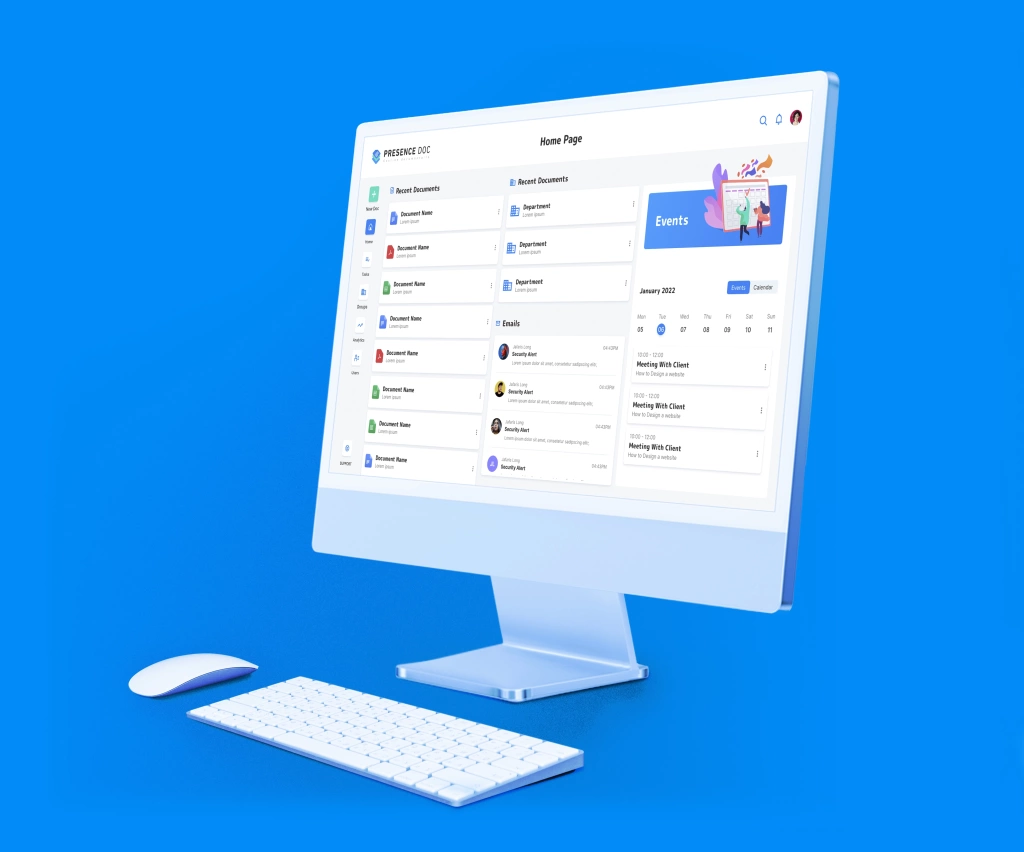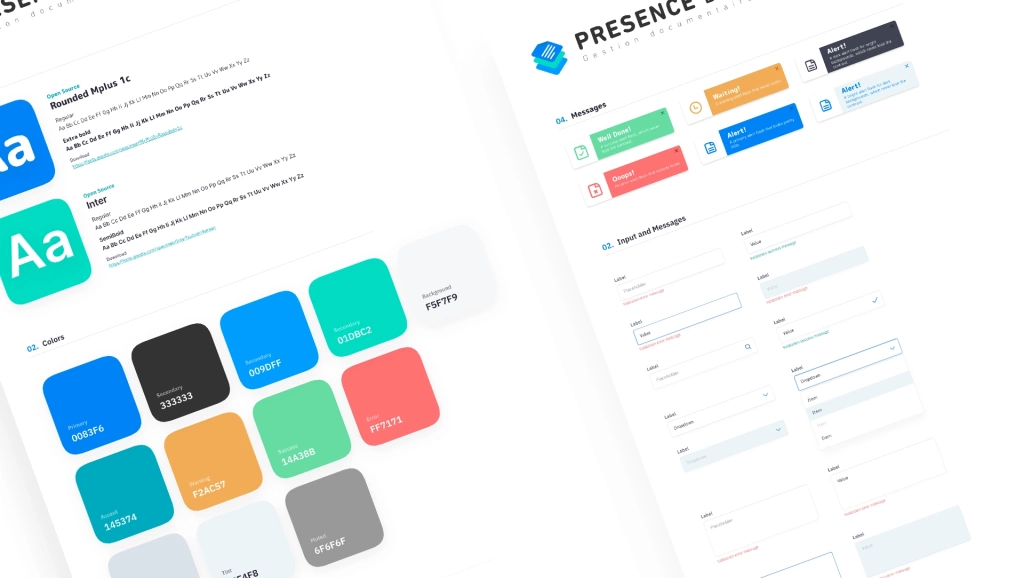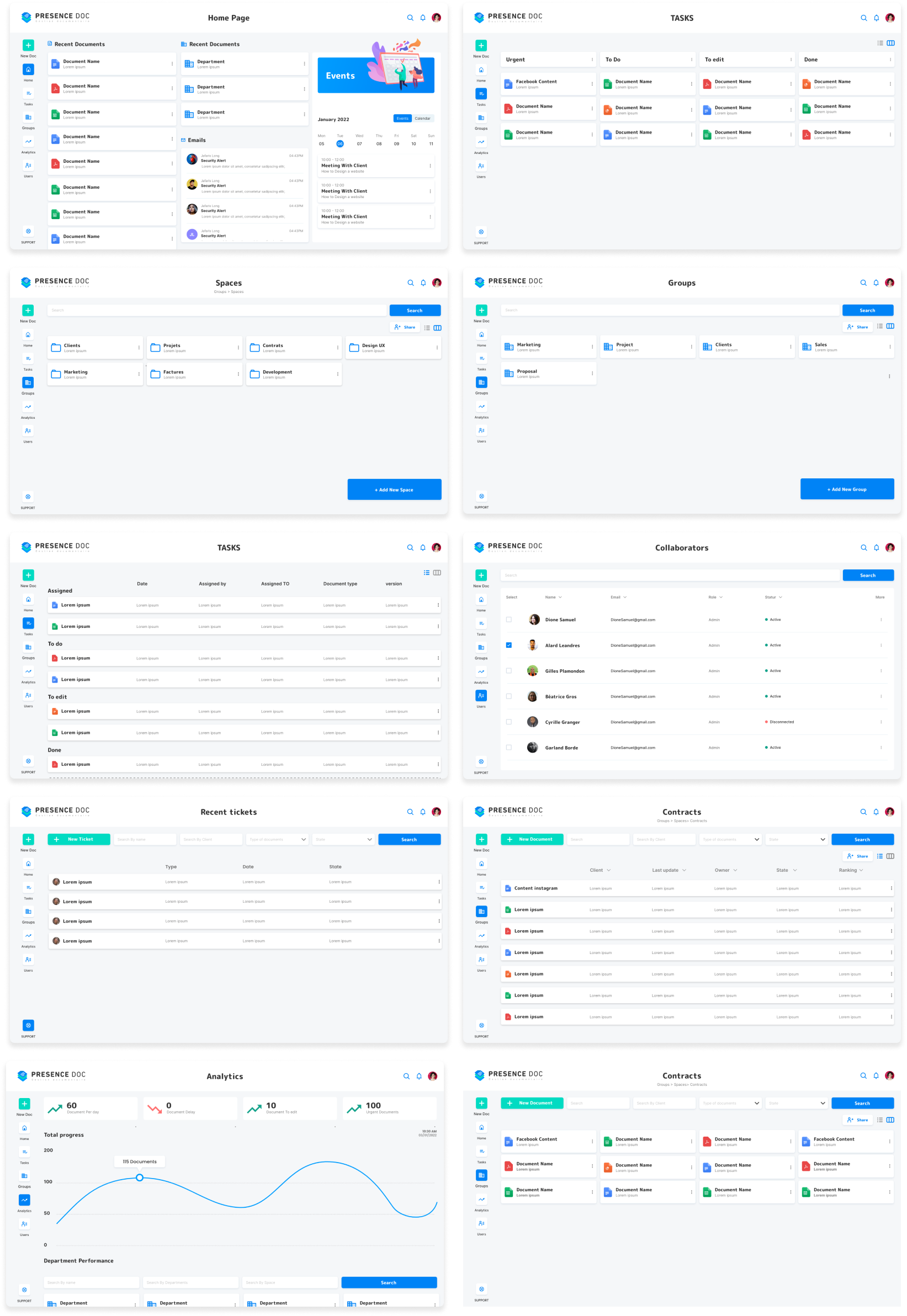Presence Docs is a next-generation knowledge and collaborative platform that significantly enhances the functionality of Google Workspace. Their technology focuses on connecting people with the right content, centralizing information from various sources, and ensuring the continuous updating of living information. The platform emphasizes effective collaboration through discussions, comments, and integrated ratings, along with proactive information sharing and advanced search capabilities. It utilizes AI and machine learning to structure and qualify information, addressing major challenges in information access and management in today’s data-intensive environment.

The challenge
Presence Docs, a pioneering knowledge and collaborative platform, has transformed how businesses manage and interact with information. Despite the acclaim from its current users, the platform faced significant challenges. The organic growth of the application, fueled by the addition of new modules to meet client demands, led to a need for restructuring and redesigning. The goal was to enhance consistency and user-friendliness, while also infusing a fresh, modern look to meet current design standards. This case study delves into how Presence Docs navigated these challenges to revolutionize information management.
Objectives and Goals
- Increased users' trust, in the platform's AI.
- Redesign and simplify the product.
- Increase user retention for new users while keeping the Older users engaged.
- Enhancing user engagement
- Scale the company and process to be more design-centric
Process and Solutions
1. Platform Assessment and User Feedback:
The team then evaluated the existing platform and scrutinized user feedback, which was crucial in identifying areas needing improvement.

2. Ideation for Structure and Workflow
Armed with insights from the first two steps, the team engaged in ideation sessions to devise a better structure and workflow for the platform.

3. Creating Wireframes
The conceptual ideas were then translated into wireframes, serving as the blueprint for the redesigned platform.

4. Branding and UI Design
Following the wireframes, the focus shifted to branding and UI design, ensuring that the visual aspect of the platform was both appealing and functional.


5. Testing and Iteration
The final stage involved rigorous testing and iterative improvements, fine-tuning the platform based on real-world usage and feedback.

Results and Impact
The extensive redesign and restructuring of the Presence Docs web application led to significant improvements in user experience and increased user retention. Key performance indicators (KPIs) showed the following results:
User Retention Rate: There was a noticeable increase in user retention, indicating that new users were more likely to continue using the platform.
User Satisfaction Scores: Post-redesign, users rated the application higher in terms of aesthetic appeal and functionality.
Engagement Metrics: Enhanced user engagement was observed, with users spending more time on the application, taking less time to complete tasks, and utilizing more of its features.
Reduction in User Support Queries: There was a decrease in the number of support queries, suggesting that the new design was more intuitive and user-friendly.
The successful integration of a new Design System not only streamlined the design process but also set the foundation for a scalable, design-centric future for the organization. This strategic move positions Presence Docs to accommodate future growth better and adapt to evolving user needs.
